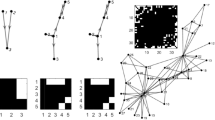Abstract
Industrial plants usually consist of different process units which are strongly cross-linked to each other. This leads to the point that a voluntary or involuntary change in one unit (e.g. changing some process control parameter or having a malfunctioning value) can lead to unexpected results in another process unit. Hence, knowing which are the causing and which are the effecting process variables is of great interest. Still, depending on the underlying process and the characteristics of the excitation signal, directed connectivities can or can not be detected. Therefore, in this paper several types of dynamic SISO systems and excitation signals are defined for which a directed connectivity from input to output signal should be detected and from output to input should not be detected. As a method for the detection of directed influences Spectral Granger Causality is used, which has been extended with a surrogatebased significance test. This test is used to define if a directed influence exists from one process variable to another.
Chapter PDF
Similar content being viewed by others
References
Bastos, A. and Schoffelen, J.: A Tutorial Review of Functional Connectivity Analysis Methods and Their Interpretational Pitfalls, Frontiers in Systems Neuroscience(9), pp. 175, (2016)
Bauer, M.: Data-driven Methods for Process Analysis. University College London, PhD Thesis, (2005)
Blinowska, K.: Review of the methods of determination of directed connectivity from multichannel data, Medical & Biological Engineering & Computing (49), pp. 521 - 529, (2011)
Blinowska, K. et al.: Granger causality and information flow in multivariate processes, Phy. Rev. E.(70), no.p. 4, (2004)
Choudhury, A.A.S. and Shah, S.L. and Thornhill, N.F.: Diagnosis of Process Nonlinearities and Valve Stiction: Data Driven Approaches, Advances in Industrial Control, Springer, (2008)
Spectral connectivity toolbox: ”https://github.com/Eden-Kramer-Lab/spectral_connectivity/”, last access August 2018
Geweke, J., Measurement of linear dependence and feedback between multiple time series. Journal of American Statistical Association, vol. 77. pp 304–313 (1982)
Granger, C. W.J.: Investigating Causal relations by Econometric Models and Cross- Spectral Methods, Econometrica 37, (1969)
Heckman, J.: Econometric causality, International statistical review(76), pp. 1–27, (2008)
Kaminski M., and Blinowska K.J.: Directed Transfer Function is not influenced by volume conduction—inexpedient pre-processing should be avoided, Frontiers in Computational Neuroscience. (8), (2014)
Kugiumtzis, D.: Partial transfer entropy on rank vectors, The European Physical Journal Special Topics (222), pp. 401–420, (2013)
Kühnert, C., et al.: Methoden zur datengetriebenen Formulierung und Visualisierung von Kausalit¨atshypothesen. at - Automatisierungstechnik Methoden und Anwendungen der Steuerungs-, Regelungs- und Informationstechnik, 60(10), pp. 630-640. , (2012)
Staniek, M. and Lehnertz, K.: Symbolic transfer entropy: inferring directionality in biosignals,Biomedizinische Technik/Biomedical Engineering (54), pp.323–328 , (2009)
Schreiber, T.: Measuring information transfer, Physical Review letters 85(2), pp. 461-464, (2000)
Seth, A. et al.: Granger Causality Analysis in Neuroscience and Neuroimaging, Journal of Neuroscienc(8), pp. 3293–3297, (2015)
Yang, D. et al.: Granger Causality for Multivariate Time Series Classification, IEEE International Conference on Big Knowledge (ICBK), pp. 103-110, (2017)
Author information
Authors and Affiliations
Corresponding author
Editor information
Editors and Affiliations
Rights and permissions
Open Access This chapter is licensed under the terms of the Creative Commons Attribution 4.0 International License (http://creativecommons.org/licenses/by/4.0/), which permits use, sharing, adaptation, distribution and reproduction in any medium or format, as long as you give appropriate credit to the original author(s) and the source, provide a link to the Creative Commons licence and indicate if changes were made.
The images or other third party material in this chapter are included in the chapter's Creative Commons licence, unless indicated otherwise in a credit line to the material. If material is not included in the chapter's Creative Commons licence and your intended use is not permitted by statutory regulation or exceeds the permitted use, you will need to obtain permission directly from the copyright holder.
Copyright information
© 2019 The Author(s)
About this paper
Cite this paper
Kühnert, C., Frey, C., Seyboldt, R. (2019). Detection of Directed Connectivities in Dynamic Systems for Different Excitation Signals using Spectral Granger Causality. In: Beyerer, J., Kühnert, C., Niggemann, O. (eds) Machine Learning for Cyber Physical Systems. Technologien für die intelligente Automation, vol 9. Springer Vieweg, Berlin, Heidelberg. https://doi.org/10.1007/978-3-662-58485-9_11
Download citation
DOI: https://doi.org/10.1007/978-3-662-58485-9_11
Published:
Publisher Name: Springer Vieweg, Berlin, Heidelberg
Print ISBN: 978-3-662-58484-2
Online ISBN: 978-3-662-58485-9
eBook Packages: Intelligent Technologies and RoboticsIntelligent Technologies and Robotics (R0)




